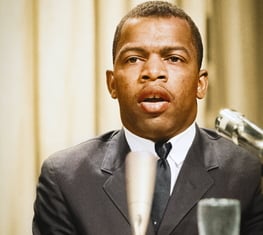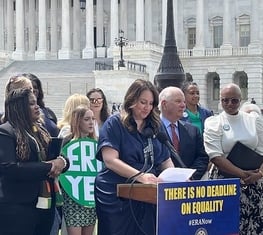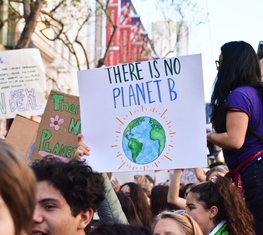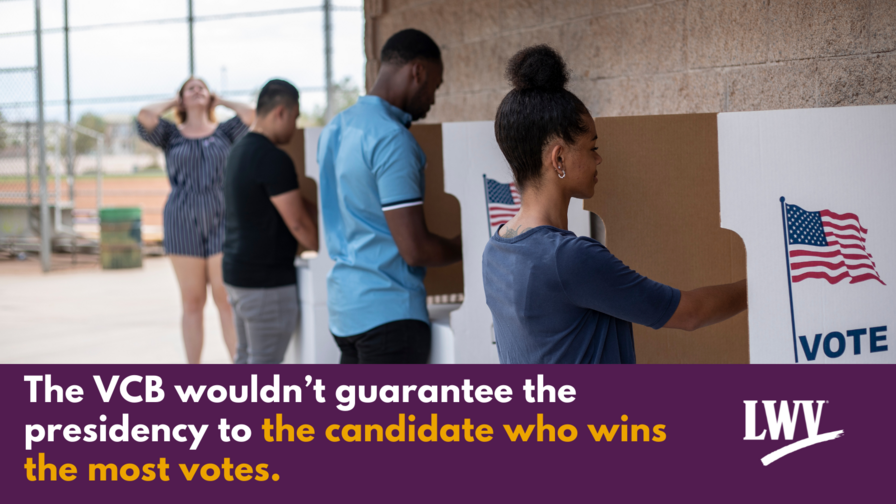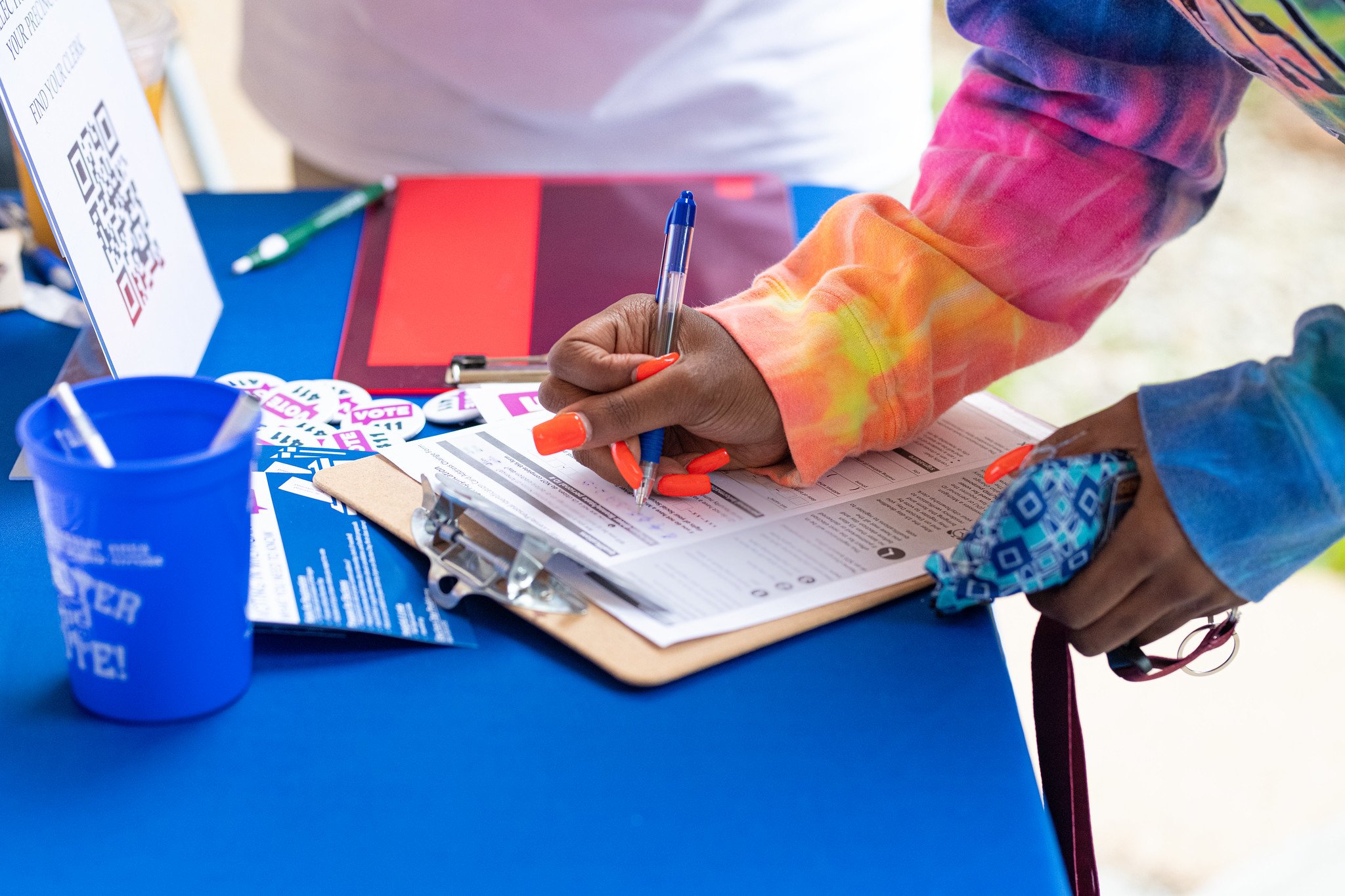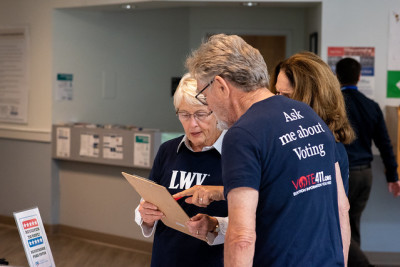Think Before You Ink: LWV Opposes the “Voter Choice Ballot” Proposal
This blog was written by the LWVUS National Popular Vote Task Force.
The "Voter Choice Ballot" (VCB) is a new proposal for electoral college reform advocated by “Making Every Vote Count” (MEVC). With enough ‘yes’ votes, a state acting under the VCB would award its electoral votes to the candidate who’d won the nationwide popular vote, contingent upon voters’ responses to a ballot question (see below).
This is different from the National Popular Vote Interstate Compact (NPVIC), which has states award their electoral votes to the winner of the popular vote outright (i.e. voters are not asked the question below). The NPVIC would only go into effect when the states in the Compact collectively represent a majority of the electoral votes (at least 270 of 538), thus guaranteeing the presidency to the national popular vote winner. No such guarantee exists with the VCB proposal.
The Ballot Question
Under MEVC’s proposed VCB plan, a voter would first vote for President and then vote on the following ”yes/no” question:
“Do you want the candidate who receives the most votes in the nation to become the President? If you do, fill in the oval next to YES.”
After the voter answers, the following statement is provided:
“The state will count the votes for all those who filled in the YES oval as cast for the winner of the national popular vote for the purpose of appointing electors as otherwise provided by this state’s law.”
Every voter who votes "yes" on the question but voted for anyone other than the national popular vote winner will have their vote transferred to the candidate who won the national popular vote.
The vague phrase “as otherwise provided by this state’s law” means that the vote just cast for President will be subtracted from the chosen candidate and added to the candidate that the voter just voted against if: (1) the opposing candidate is ahead nationally, even if (2) the voter’s choice is ahead in their state.
The LWVUS National Popular Vote Task Force Opposes this Proposed Measure
Two of the significant reasons the LWV has both opposed the Electoral College for more than 50 years and supports the National Popular Vote (Interstate) plan are:
- We support the idea that every vote should be equal.
- We believe that the candidate who wins the most votes for the presidency should be guaranteed the office.
The Voter Choice Ballot (VCB) proposal does not guarantee either of these goals. We trust that the group putting the plan forth (Making Every Vote Count) has a purpose that is admirable and well-intended. Nevertheless, we find major weaknesses with the recently developed system.
Simply stated, this proposal would prevent all votes from being equal and wouldn’t guarantee the presidency to the candidate who wins the most votes in all 50 states and DC.
Our Concerns with VCB
- The Voter Choice Ballot (VCB) is confusing. We believe voters would be tempted by the ballot question, which many Americans support in theory (namely, the winner being the candidate who receives the most votes). However, the application of further steps is unnecessarily convoluted.
- Voters would quite likely be annoyed — and surprised — to find that, because they support the idea that the candidate with the most nationwide votes should win, the choice on their own individual ballot may be flipped.
- The unilateral enactment by individual states would put some states and state political parties at a disadvantage.
- The LWV does not encourage strategic voting (as per our 2020 Electoral System position); the VCB system may cause strategic planning among voters and parties within the states.
- We question the idea and doubt the likelihood of systematically and strategically enacting the VCB plan by politically balanced state pairs.
- Most states (thus most voters) would continue to be ignored, as VCB does not solve the problem of ‘swing states.’
- The National Popular Vote organization, which opposes VCB, theorizes two points about its effect on battleground states: namely that “the most efficient way for a candidate to win electoral votes under VCB is to redouble efforts to win popular votes in existing battleground states—not to campaign in spectator states” and that “if a battleground state enacted VCB, it would be exchanging its current high level of attention from candidates for less attention than its population warrants.” The League of Women Voters agrees with that analysis.
- Finally, unlike the NPVIC, the VCB proposal does not guarantee the presidency to the candidate who receives the most votes in all states and DC.
In the League, we see a continued struggle to clarify the differences between the Electoral College and using the NPVIC; we believe another such plan (and one with numerous weaknesses) would cause even more confusion. Advocacy for the VBC will, at the least, cause confusion about what could be achieved through the NPVIC, and at the worst aid the continued use of the Electoral College as it currently stands. Either result jeopardizes our goals as outlined above, particularly ensuring that every vote is equal.
Learn more about our opposition to the electoral college and support of the NPVIC .
The Latest from the League
The Electoral College is often not a well-understood entity. I want to highlight some of the history and shortcomings of this process and offer some possible solutions to replacing this flawed system for the good of the nation and the health of our democracy.
Every four years, the Electoral College, a little-known feature of our Constitution, enjoys a fleeting movement of fame. About six weeks after the long grind of the presidential election is over, the 538 college members meet in their respective states to perform their sole constitutional function: to elect the President and Vice-President of the United States.
But the impact of the college on presidential elections is far greater — and more controversial —than its brief life indicates.
The Electoral College has been a part of our democratic process since the start, but what does it really do and what can we expect this year? Here is what you should know.
Sign Up For Email
Keep up with the League. Receive emails to your inbox!
Donate to support our work
to empower voters and defend democracy.
